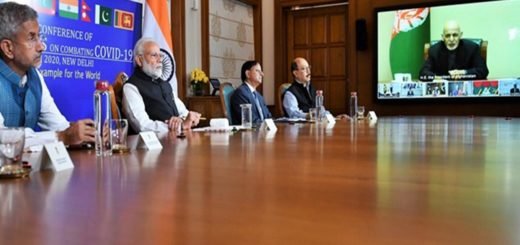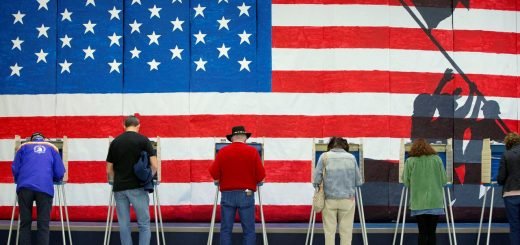Triangular Diplomacy in the 21st Century: The United States-India and China

Introduction
The competition with China and the United States is shaping Asia’s future. As China is more unassailable in India, the United States has often sacrificed nuclear weapon proliferation goals having circumventing strategy against China. The triangular diplomacy has an erratic and unpredictable impact on India, China. The United State and India recalibrate their bilateral relations with each other. Both the US-India seek to avoid entanglement with each other in competition with China. The brief envisages the triangle persisting triangular diplomacy between The United States, India and China focusing on their common interests and policy implications and certain key commendations.

The United States-India –China Triangle?
A triangle refers to a situation when three regional powers are important to each other and change in the relationship in anyone impacts the relationship between the three of them. In the past the issues in an alleged triangle concerned primarily South Asian issues. Among those adverted were the India-China border dispute, establishing nuclear deterrents, the war on terrorism, relations with Pakistan and political and economic influence in the South China Sea. ”Washington was often seen as the principal beneficiary of a triangle. Particularly when Sino Indian tensions escalated, the United States could enjoy its Indian curry and it’s Peking duck in the same meal.” On the other hand, evidence that the U.S. has successfully leveraged India to achieve U.S. goals elsewhere in Asia is scant. A Chinese scholar argues, “India has not yet emerged strong enough to significantly influence Sino-U.S. relations.”
If the definition of a triangle is revised to include the demonstrable impact of change in one set of relationships on the policies of a third country, modern examples of a functioning triangle are few and far between. On the global stage, India and China uphold common interests. They have cooperated against U.S. preferences in international institutions such as the United Nations, the World Trade Organization, and the International Monetary Fund (IMF), as well as during multilateral negotiations on climate change. Both have been more reluctant than the United States to support intervention in the internal affairs of other sovereign states. Both have resisted and sought to water down sanctions proposed by the United States against Iran, from which both import oil. Both have rejected U.S.-supported binding restrictions on greenhouse gas emissions, including at the 2009 Climate Change Summit. This cooperation in international forums helps shock absorber and temper rivalry between India and China, but it is not clear how this cooperation impacts relations between them, and with the United States. Moreover, these countries also compete for influence within these international institutions and to secure their economic interests. For example, China is opposed to India’s search for a seat on the UN Security Council. Increasingly dependent on imported oil to power their economies, both countries are looking for additional energy options, including those approved by the West. Occasionally, Chinese and Indian national oil firms have cooperated; they compete more regularly. India refused to participate in the universal sanctuary. Chinese and Indian national oil companies have cooperated; more often they compete. India declined to participate in international sanctions against Myanmar not because it shared China’s opposition in principle to intervention, but to compete more effectively with China for influence with the junta within that country. In short, relations between any of the two countries have a little consistent impact on the third in East or Southeast Asia. A triangle, such as it may be, may have an episodic impact on some global and South Asian issues

Common Interests
The Rivalry is cushioned not only by different priorities but also by common interests. Although they can lead to friction as well, these include mutually beneficial trade and financial ties, shared concern about climate change and diminished natural resources, and a common interest in a peaceful maritime commons. The benefits of trade and investment need no further elaboration, though they are not shared equally. More interesting are the possibility of managing threats to the environment and the global commons. All three states have a fundamental interest in a safe and peaceful maritime commons. With China and India dependent on imported energy transported from the Middle East and Africa and with their economies reliant. On seaborne trade, maritime security has become a prominent issue. The exploitation of energy resources in the South China Sea and of new technology to access shale oil will not change the fundamentals of this dependence. In addition, fisheries provide a major source of protein for their populations. The United States Navy remains the primary guarantor of freedom of navigation. Amid tensions between India and China, the Indian navy is participating in military exercises with the US Navy battle group near the Andaman and Nicobar Islands in the Bay of Bengal. The message that put China at the Centre of the United States was to back up sovereignty of friends and partners and to reassure them that we will be there to defend things in the face of China’s bad behaviour. The United States plays a lead role of QUAD, has become a pivot against China. Exercising with the Indian navy in the Indian Ocean and Japan and Australia near the mouth of the South China sea. Additional transnational challenges, such as the smuggling of arms, drugs, and people across the seas.To those who stress security as the bedrock for stability in Asia, moderating “strategic mistrust” between China and the United States is crucial. The Intensified rivalry between China and the United States would lead both countries to pressure other Asians states to choose sides, thus restricting their room for manoeuvre. The United States remains essential for stability in Asia. In Asia, it remains a global power without territorial claims, prepared to underwrite security, ready to accept an unfavourable balance of trade, and inclined to stress adherence to rules and norms that benefit all. Even as its economic predominance wanes and its extraordinary commitment slowly diminishes, it must continue to focus on Asia. While the U.S. is recalibrating its commitments to Asia, Beijing needs to remain cautious. Another about of Chinese assertiveness in anticipation of America’s decline, such as the transparent attempt to profit from America’s domestic focus in the wake of its 2008 financial crisis, could be de-stabilising. Beijing’s will have to manage China’s nationalism to ensure that its ambitions don’t get out of hand. Finally, India needs to abandon illusions about again playing a non-aligned role, this time between the U.S. and China, and help diminish the intensity of competition in Asia. In short, while the U.S. slowly steps back, and China slowly steps forward, India needs to slowly step upgal fishing make it more urgent for states to cooperate
Policy Implications
Moderating “strategic mistrust” between China and the US is essential to those who emphasise security as the basis for stability in Asia. Intensified competition between China and the U.S. would lead both countries to pressure other Asian states to choose sides, thereby reducing their manoeuvring space. The United States continues to be central to Asian stability. In Asia, it remains a global force without territorial claims, ready to underwrite defence, willing to embrace an unfavourable trade balance and inclined to emphasise adherence to rules and norms that benefit all. Although its economic predominance is slowly diminishing and its extraordinary commitment must continue to focus on Asia. Even as its economic predominance wanes and its extraordinary commitment slowly diminishes, it must continue to focus on Asia. While the U.S. is recalibrating its commitments to Asia, Beijing needs to remain cautious. Another bout of Chinese assertiveness in anticipation of America’s decline, such as the transparent attempt to profit from America’s domestic focus in the wake of its 2008 financial crisis, could be de-stabilising. Beijing’s will have to manage China’s nationalism to ensure that its ambitions don’t get out of hand. Finally, India needs to abandon illusions about again playing a non-aligned role, this time between the U.S. and China, and help diminish the intensity of competition in Asia. In short, while the U.S. slowly steps back, and China slowly steps forward, India needs to slowly step up.

Commendations
There are certain key commendations in what the United States can do in front of tensions with China. India and the U.S. should continue to strengthen their broader relationship; this will, in and of itself, shape China’s perception and options. Beijing should also be engaged. this can benefit all three countries and demonstrate the advantages of cooperation. The two countries should continue their consultations on China. The need is to not provoke China and to balance the imperatives of signalling Beijing, Provoking would mean that publicly India and the U.S. continue to couch these official discussions in terms of the Asia-Pacific (or sometimes the Indo-Pacific), but privately the dialogue needs to be more explicit and denotative. Both countries’ regional strategies aren’t all about China, but it features significantly—a fact that needs to be acknowledged. This dialogue should be consistent, coherent and not contingent on Chinese behaviour during a given quarter. Contingency planning should be included. It might also be worth expanding or upgrading this dialogue beyond the foreign policy bureaucracies. In addition, there should be consideration of bringing in other like-minded countries, like Australia and Japan. Furthermore, the two countries can also consult on the sidelines of—or prior to—regional summits. The U.S. should continue to support the development of India’s relationships with its allies and countries in Southeast Asia. But while nudging and spurring, to some extent participating in, the development of these ties, Washington should let them take shape organically. Relationships are driven by—and seen as driven by—Delhi and Tokyo or Delhi and Canberra will be far more sustainable over the long term rather than partnerships perceived as driven by the U.S. New Delhi, in turn, has to show that it can walk the talk and follow through on its “Act East” policy—deepening both strategic and economic cooperation with the region. It will also need to move beyond its traditional aversion to all external powers’ activity in South Asia and consider working with the U.S. on shaping the strategic and economic options available to India’s neighbours (whose relations with China have expanded). There can be learning about China, including its domestic dynamics and actors, as well as perceptions and policies about it in the other country—and not just on the part of the governments. To the extent that competitive instincts will allow, the American and Indian private sectors, for example, can discuss doing business in China, perhaps learning from each other’s experiences. Or they can do this in the context of a Track-II India-U.S. dialogue about China that involves other stakeholders.

Conclusion
India and the United States have similar worries about China. “Strategic distrust” corrupts relations between China and India and the United States. China has significant trade surpluses with both India and the United States. The U.S.-India partnership has unrealized potential. U.S. and Indian national interests overlap rather than China’s with either India or the United States. Competition and cooperation in a set of bilateral relations between China, India and the United States have no immediate and predictable effect on third parties. It may have more impact over time, but this is especially difficult to prove. Occasionally, it is possible to monitor the reaction of one State to changes in the bilateral relationship between the other. However, no discernible trend is evident. Asian integration reduces the value of “triangular dynamics.” Relationships are asymmetrical. India is not only relatively weak, but its commitment to “strategic sovereignty” limits New Delhi’s ability to establish secure alliances with other countries. A triangular relationship appears most likely to come into play when important national security interests of the three states collide. To conclude the triangular diplomacy particularly has certain common interests, policy implications and certain commendations.



















